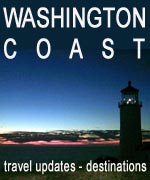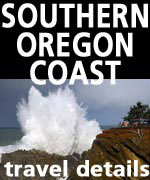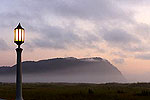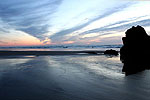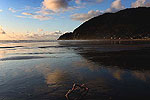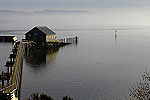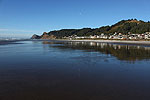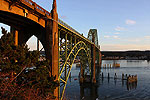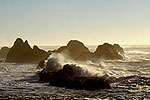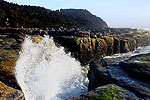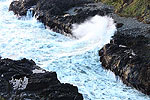Rare Lunar Event Tonight Won't Happen Again for almost 20 Years: Oregon, Washington, Coastlines
Published 06/10/25 at 5:35 p.m.
By Oregon Coast Beach Connection Staff
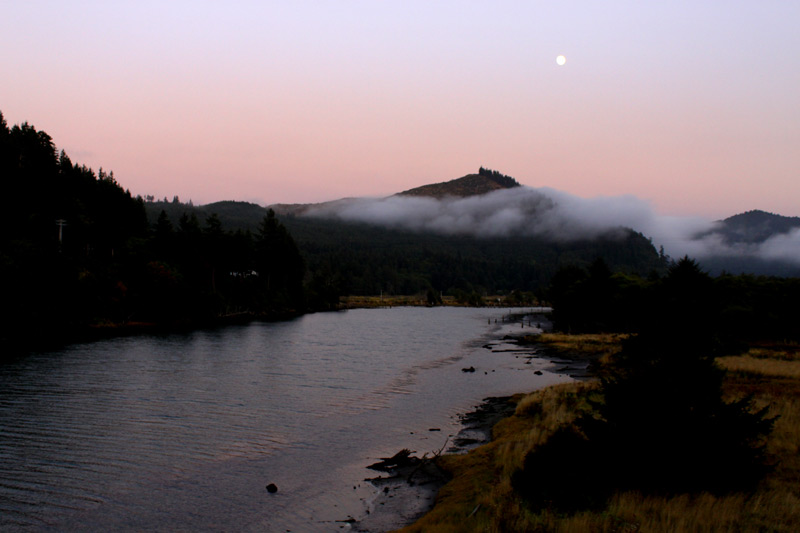
(Seaside, Oregon) – If you're anywhere in Oregon, Washington or along its coastlines with a somewhat clear sky tonight, you're going to see something that only comes along every few decades. (Above: Lincoln City's Siletz River / Oregon Coast Beach Connection).
Indeed, the low-sky fun may last at least another two days, if you're wanting to get the money shot.
Includes exclusive listings; some specials in winter
In Cannon Beach:
Includes rentals not listed anywhere else
In Manzanita, Wheeler, Rockaway Beach:
Some specials for winter
In Pacific City, Oceanside:
Some specials for winter
In Lincoln City:
Some specials for winter
In Depoe Bay, Gleneden Beach:
Some specials for winter
In Newport:
Look for some specials
In Waldport
Some specials for winter
In Yachats, Florence
Some specials for winter
Southern Oregon Coast Hotels / Lodgings
Reedsport to Brookings, places to stay; winter deals
According to Portland astronomer Jim Todd (of OMSI), early Wednesday morning, June 11, skywatchers around the northwest will witness a rare lunar phenomenon as the full moon reaches its highest position of the month at 1:09 a.m. Despite this peak, the moon will sit remarkably low in the sky, reaching an altitude of only 15.33 degrees above the horizon - a sight unseen since 2006 and one that won’t occur again until 2043.
This Strawberry Moon will be at its lowest high point in decades.
NASA notes that the name “strawberry moon” was popularized by farmer’s almanacs in the 1930s and has since become a widely recognized term. According to the farmer’s almanac, the name originated with Algonquin tribes who associated the full June moon with the short strawberry harvest season. In Europe, the moon was historically referred to as the “Rose Moon.”
This celestial alignment follows a predictable pattern based on the relationship between the sun and the moon.
Viewing details for Portland (times are similar for areas south like Ashland or Gold Beach, and to the north at Seattle, but they will differ):
- Moonrise: 9:12 p.m. (June 10), southeast
- Highest point: 1:09 a.m. (June 11), due south
- Moonset: 5:04 a.m. (June 11), southwest
“Because full moons occur when the moon is directly opposite the sun, you can imagine the two as sitting on either side of a celestial see-saw: on the day when the sun is highest in the middle of the day (in summer), the moon is at its lowest high point at midnight; and on the day when the sun is at its lowest high point in the middle of the day (in winter), the moon is at its highest high point at midnight,” Todd said. “The highest for December is when the moon will be more than 68 degrees above the southern horizon. Compare this to June when the moon barely grazes 15 degrees above the southern horizon.”
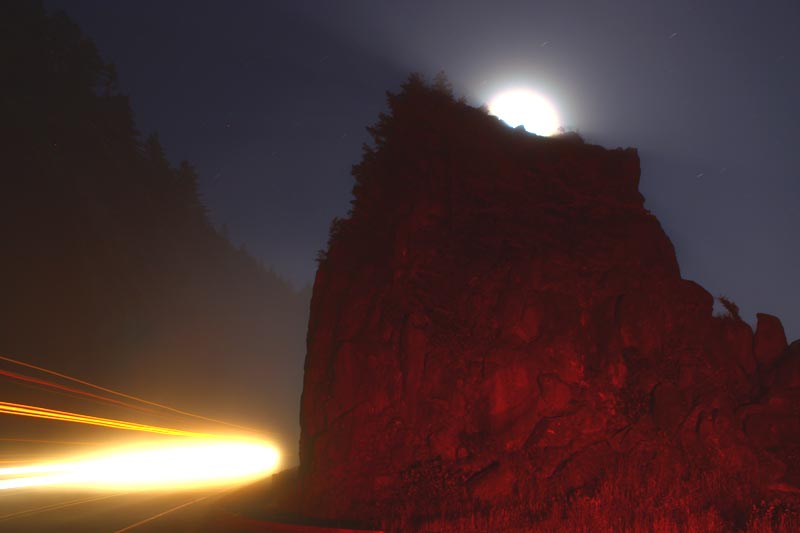
Oregon Coast Beach Connection
Along the coastlines of Washington and Oregon, this will mean some extra interesting photos at night or at dusk if the moon happens to be low then. These moons are often extremely wild colors and appear much larger when low on the horizon.
Astronomy News, Updates from Oregon Coast, Washington Coast Astronomy from a Pacific Northwest Perspective: stargazing, space science, meteors, aurora borealis, interstellar phenomena, surprises in the skies.
Late at night, look to the south when it's low in areas like Cape Foulweather near Depoe Bay, from Cape Arago near Coos Bay, as high vantage points give great views to the south. Manzanita's Neahkahnie Mountain will also be awesome for this.
The moon was extremely large last night and low on the horizon, so photographers can take advantage along the coastlines or inland areas for at last another evening or two.
You're also going to discover the moon looks even larger than usual now – something scientists call the “full moon effect.”
From Oregon Coast Wild to Historical, Stark Changes of Seaside Aquarium Exterior - Drastic shifts in look and features dot the attractions history
“The bigger-than-usual size of a moon seen near the horizon is a trick your eyes play on you, called 'the moon illusion,' “ Todd said. “The illusion is a matter of perception, a trick of the brain, which perceives the Moon when seen overhead as closer than the Moon seen at the horizon. When an object is perceived to be nearer, the brain may compensate by making it look smaller to us. Likewise, an object thought to be farther away will be seen as larger.”
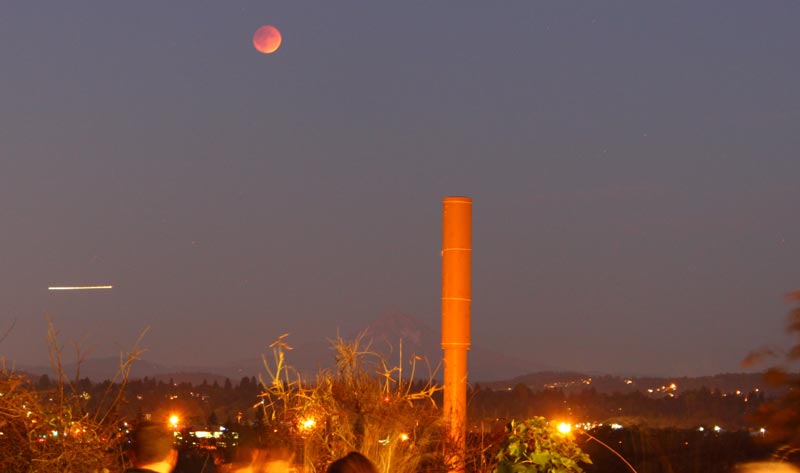
The full strawberry moon will be positioned within the constellation Ophiuchus, near the Milky Way’s plane, and will appear in a distinct champagne hue as it rises from the east. The moon’s golden tint during summer months is the result of atmospheric scattering - when its light, traveling through more air at low angles, loses shorter wavelengths like blue and green, leaving behind rich red, yellow, and orange tones.
Skywatchers should also look for a bright reddish star near the moon: Antares, the heart of the constellation Scorpius. The moon will be approximately 247,260 miles from Earth at its peak.
For those wanting to explore the wonders of the night sky further, OMSI’s Kendall Planetarium hosts Starry Nights Live! daily, offering an in-depth look at celestial events and constellations.
Oregon Coast Hotels for this event - South Coast Hotels - Oregon Coast Vacation Rentals - Where to eat - Maps - Virtual Tours
Oregon Coast Vacation Rentals
Oregon Coast Lodging Specials
OREGON COAST HOTEL REVIEWS (hit refresh to see different reviews)
The Lil' Cannon Beach Cottage That Could: Whimsical Yet Historic Rental on N....
A little vaction rental called Lil Bird Cottage is antique-like but vibrant, bold. Lodging reviews, hotels, Cannon Beach lodging
Old, Authentic Oregon Coast Motor Lodge Converted Into Colorful Boutique Motel
History and histrionics: one outstanding yet funky little motel on the outer edges. Newport hotel reviews, lodging news, Newport lodging
Clifftop Spa Aglow Above Oregon Coast's Nye Beach: Luxury Meets History at Inn
Newport's Inn at Nye Beach has numerous sides. Hotel reviews, lodging
Oregon Coast Play 'n Stay: Seaside's Prom Walk and Its Legendary Inns
Quite a walk through time and scenery, with some stellar places to stay. Seaside lodging Seaside hotel reviews
More About Oregon Coast hotels, lodging.....
More About Oregon Coast Restaurants, Dining.....
Washington Coast / Oregon Coast Articles (stories are random: hit reload to see different articles)
Oregon Coast Tuna Overflows at Garibaldi Event This WeekendOregon Tuna Classic in Garibaldi Aug 15 - 16. Garibaldi events
Two More Epic Runs of Ride the Dirt Wave on Oregon Coast: Bandon, Newport
Bandon on July 19-20 and in Newport on August 2?3. Newport events
Two Smaller Meteor Showers Now May Be Bigger Show Than Perseids on Oregon / W...
Little streaks from two smaller meteor showers have been decent - a full moon will wash out the coming peak. Astronomy, sciences, Brookings events, Gold Beach events, Port Orford events, Coos Bay events, Bandon events, Florence events, Yachats events, Newport events, Lincoln City events, Rockaway Beach events, Manzanita events, Cannon Beach events, Seaside events, Astoria events
Oregon State Police Seek Coast Range Hit-and-Run Suspect Who May Have Left U.S.
Three teens were injured, one later died. Traffic. Crime
Many Heat Advisories for Oregon, Washington, Coastlines as Temps Near 100 Som...
Extreme Heat Warning for Portland; south coast may break record. Weather
Bright Fireball Seen Breaking Up Above Oregon Coast to Washington, California...
Experts agree was likely space junk but a natural fireball possible. Astronomy, sciences
Tsunami Advisories Canceled on Oregon Coast, Washington Coast
Updates. Experts are more worried about unusually heavy currents. Weather, Sciences, events
US Coast Guard Joins with Canadian Forces for Rescue Off Washington Coast - V...
Two critically ill passengers aboard the Ruby Princess cruise ship
Back to Oregon Coast
Contact Advertise on Oregon Coast Beach Connection
All Content, unless otherwise attributed, copyright © Oregon Coast Beach Connection. Unauthorized use or publication is not permitted





